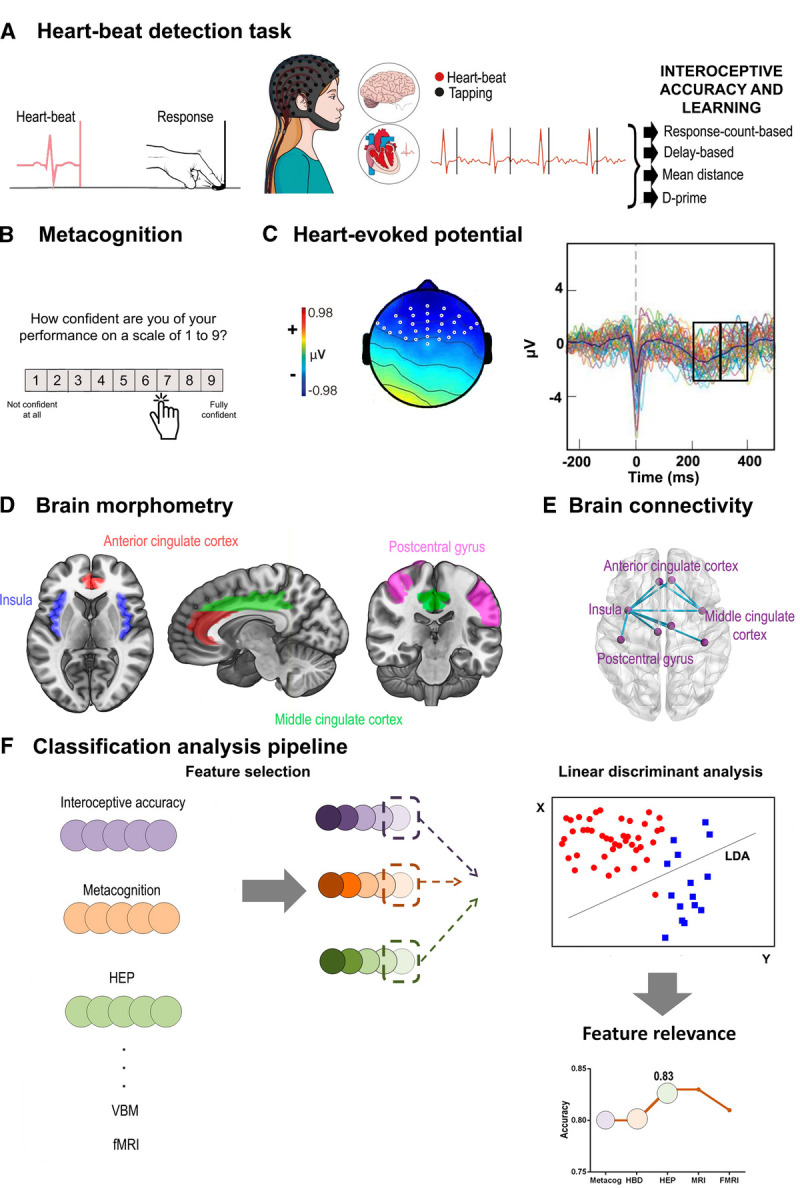FIGURE 1.

Research framework. A, In the HBD task, subjects were asked to follow their heartbeats by pressing a keyboard key. Four interoceptive accuracy indexes were calculated. B, After each block, the participants rated their confidence about their performance; this score was used to derive the confidence and metacognition indexes. C, HEP is a negativity presented between 200 and 400 milliseconds after the R-peak wave of the heartbeat. Two windows were selected: one between 200 and 300 milliseconds, and the other one between 300 and 400 milliseconds. D, Interoceptive regions of interest were selected from the brain volume analysis for the classification analysis: bilateral middle cingulate cortex (green), anterior cingulate cortex (red), postcentral gyrus (fuchsia), and insula (blue). E, Based on resting-state recordings, we calculated functional connectivity between the same areas considered for structural analysis. F, Classification linear discriminant analyses were performed with one feature selected from each level and dimension previously presented; a feature relevance analysis was then performed to determine the weight each feature had in the classification. HBD = heartbeat detection; HEP = Heart-evoked potential; fMRI = functional magnetic resonance imaging; VBM = Voxel-based morphometry; LDA = Linear discriminant analysis.
